一种太阳能无线声光控LED灯的设计
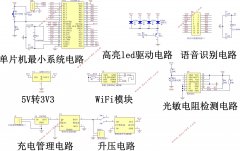
1.无需注册登录,支付后按照提示操作即可获取该资料.
2.资料以网页介绍的为准,下载后不会有水印.资料仅供学习参考之用.
密 惠 保
一种太阳能无线声光控LED灯的设计(论文13000字,程序代码)
摘要:随着能源和环境问题的日益严峻,太阳能作为理想的清洁能源,LED作为节能环保的新型光源受到广泛的重视和应用。而近年来,智能化程度快速提高,也使智能控制技术的应用日益增多。本设计利用太阳能电池板将太阳能转化为电能,经过TP4056充电模块对锂电池充电,再给整个设计供电,使太阳能和LED两种清洁能源相结合。并在节能环保的同时加入智能控制技术,以STC89C52单片机为主控芯片,通过光敏电阻进行光照控制,LD3320模块进行语音识别和ESP8266模块进行WiFi控制,改变了传统控制方式的单一性,更加便捷、人性化。论文首先说明了设计研究背景及国内外相关技术的发展现状,然后简要介绍了总体设计方案及太阳能充电、光照检测、WiFi控制和语音识别控制各模块电路的设计,接着说明了软件设计思路和与各部分电路调试过程。最后对总体设计进行总结,并提出未来展望。
关键词:太阳能;LED;光照控制;WiFi;语音识别
Design of Solar Wireless Acoustooptical LED
Abstract:With the increasingly serious problems of energy and the environment,solar energy as an ideal clean energy, LED as a new source of energy-saving and environmental protection has been widely valued and applied.In recent years, the rapid increase in intelligence has also led to an increase in the use of intelligent control technology. This design uses solar panels to convert solar energy into electrical energy. After the TP4056 charging module is used to charge the lithium battery, the entire design is powered, and the combination of solar energy and LED clean energy is used. In the energy saving and environmental protection at the same time adding intelligent control technology,with STC89C52 MCU as the main control chip, light control through the photosensitive resistor, LD3320 module for voice recognition and WiFi module ESP8266 module control,changingthe traditional control method of singleness, more convenient, Humanize.The paper firstly describes the design research background and the development status of related technologies at home and abroad. Then it briefly introduces the design of the overall design and the design of the circuit modules for solar charging, lighting detection, WiFi control and voice recognition control. Then it explains the software design ideas and All parts of the circuit debugging process. Finally, summarize the overall design and put forward the future. [资料来源:http://www.THINK58.com]
[资料来源:www.THINK58.com]
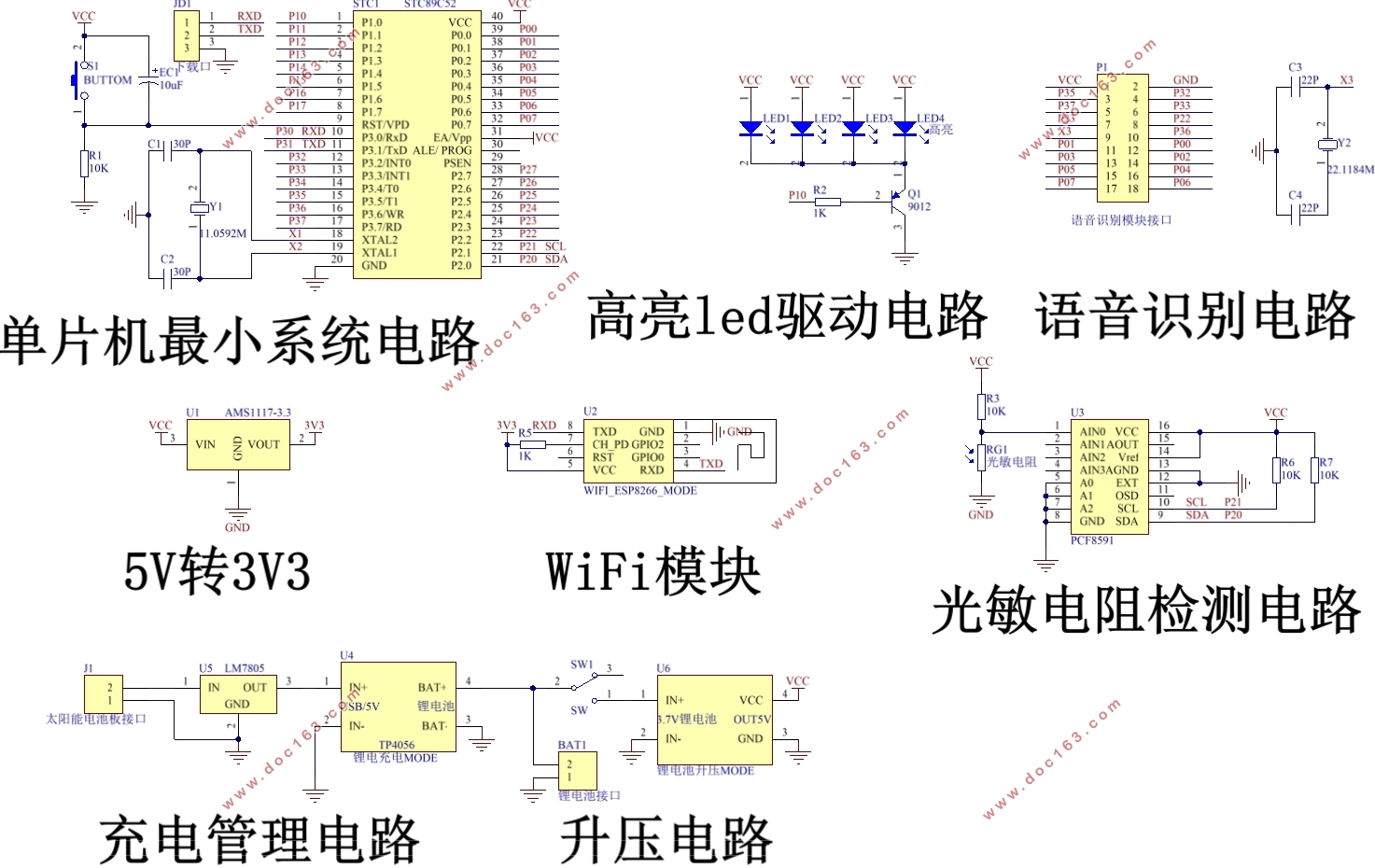
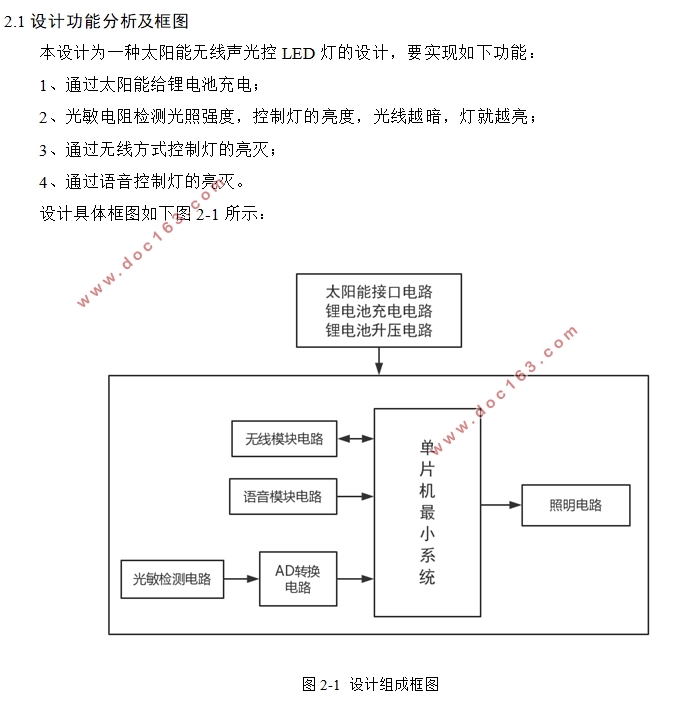
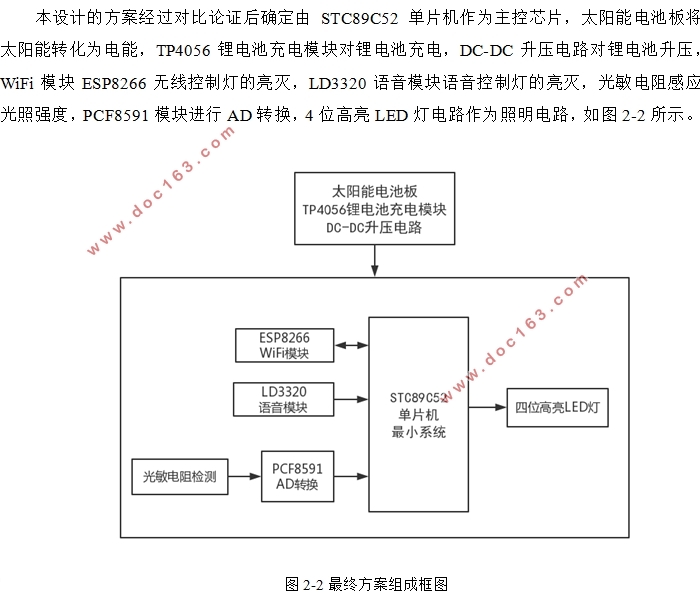
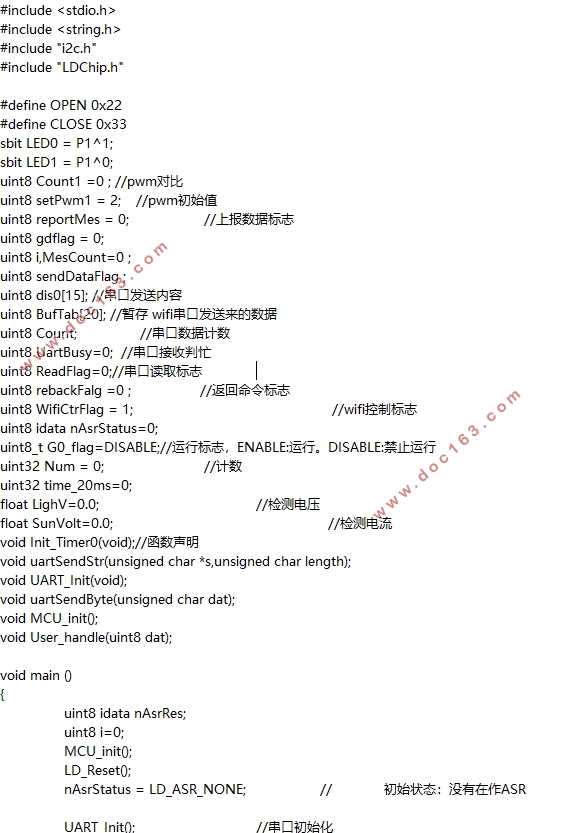
目录
1 绪论 1
1.1研究的背景 1
1.2国内外相关技术的发展现状 1 [资料来源:http://www.THINK58.com]
1.2.1太阳能及LED技术国内外发展现状 1
1.2.2语音识别技术发展现状 2
1.2.3 WiFi技术发展现状 3
1.3论文内容简介 3
1.4本章小结 4
2 方案的设计与论证 4
2.1设计功能分析及框图 4
2.2控制方案的选择 4
2.2.1单片机芯片的选择 4
2.2.2 A/D采样芯片的选择 5
2.2.3无线遥控模块的选择 5
2.2.4语音控制模块的选择 5
2.3最终方案的确定 6
2.4本章小结 6
3 硬件的设计 6
3.1单片机主控模块设计 6
3.1.1 STC89C52的功能及特点介绍 6
3.1.2各模块对单片机端口和引脚的使用 7
3.1.3单片机最小系统说明 7
3.2太阳能充电电路设计 7
3.2.1TP4056锂电池充电电路 8 [资料来源:http://think58.com]
3.2.2DC-DC升压电路 8
3.3光照检测电路设计 9
3.3.1光敏检测电路 9
3.3.2PCF8591 A/D采样电路 9
3.4 LED灯照明电路设计 9
3.5 WiFi控制电路设计 10
3.6语音控制电路设计 10
3.7本章小结 11
4 软件的设计 11
4.1软件开发平台介绍 11
4.2软件设计思路 11
4.2.1光照检测控制软件思路 12
4.2.2 WiFi控制软件思路 13
4.2.3语音控制软件思路 13
4.3本章小结 14
5 焊接与调试 14
5.1电路焊接 14
5.2系统调试 14
5.2.1太阳能充电调试 14
5.2.2光照控制调试 15
5.2.3 WiFi控制调试 16
5.2.4语音控制调试 17
5.3设计中遇到的问题及探讨 17
5.4本章小结 18
6 总结与展望 18
6.1论文总结 18
6.2对设计的思考与展望 18
参考文献 18
致谢 20
附录1 硬件原理图 21
附录2 实物照片 22
[来源:http://think58.com]
